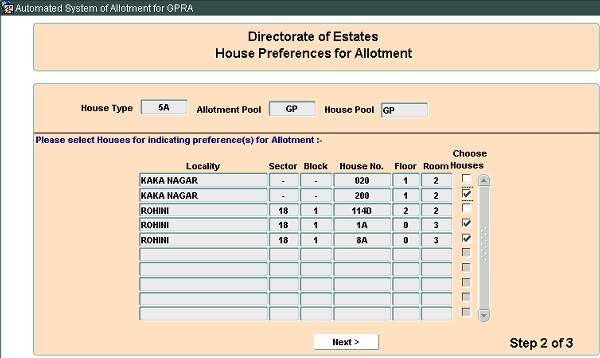Here is the list of new express trains, passenger trains, MEMU, DEMU, extension of run and increase in frequency of trains announced in Railway Budget 2012-13.
1. Kamakhya-Lokmanya Tilak (T) AC Express (Weekly) via Katihar, Mughalsarai, Itarsi
2. Secunderabad-Shalimar AC Express (Weekly) via Vijayawada
3. Bandra (T)- Bhuj AC Express (Tri-Weekly)
4. Delhi Sarai Rohilla-Udhampur AC Express (Tri-Weekly) via Ambala, Jalandhar
5. Coimbatore-Bikaner AC Express (Weekly) via Roha, Vasai Road, Ahmedabad, Jodhpur
6. Kakinada-Secunderabad AC Express (Tri-weekly)
7. Yesvantpur-Kochuveli AC Express (Weekly)
8. Chennai-Bangalore AC Double-decker Express (Daily)
9. Habibganj-Indore AC Double-decker Express (Daily)
10. Howrah-New Jalpaiguri Shatabdi Express (6 days a week) via Malda Town
11. Kamakhya-Tezpur Intercity Express (Daily)
12. Tiruchchirappalli-Tirunelveli Intercity Express (Daily) via Madurai, Virudunagar
13. Jabalpur-Singrauli Intercity Express (Daily) via New Katni Junction
14. Bidar-Secunderabad Intercity Express (6 days a week)
15. Kanpur-Allahabad Intercity Express (Daily)
16. Chhapra-Manduadih Intercity Express (Daily) via Phephna, Rasra, Mau, Aunrihar
17. Ranchi-Dumka Intercity Express (Daily) via Deoghar
18. Barbil-Chakradharpur Intercity Express (Daily) via Dongoaposi, Jhinkpani
19. Secunderabad-Belampalli Intercity Express (Daily) via Kazipet
20. New Jalpaiguri-New Cooch Behar Intercity Express (5 days a week)
21. Ahmedabad-Ajmer Intercity Express (Daily)
22. Dadar (T) – Tirunelveli Express (Weekly) via Roha, Coimbatore, Erode
23. Visakhapatnam-Chennai Express (Weekly)
24. Visakhapatnam-Sai Nagar Shirdi Express (Weekly) via Vijayawada, Manmad
25. Indore-Yesvantpur Express (Weekly) via Itarsi, Narkher, Amravati, Akola, Kacheguda
26. Ajmer-Haridwar Express (Tri-Weekly) via Delhi
27. Amravati-Pune Express (Bi-weekly) via Akola, Purna and Latur
28. Kacheguda-Madurai Express (Weekly) via Dharmavaram, Pakala, Jolarpettai
29. Bikaner-Puri Express (Weekly) via Jaipur, Kota, Katni Murwara, Jharsuguda, Sambalpur
30. Secunderabad-Darbhanga Express (Bi-weekly) via Ballarshah, Jharsuguda, Rourkela, Ranchi, Jhajha
31. Bilaspur-Patna Express (Weekly) via Asansol, Jhajha
32. Howrah-Raxual Express (Bi-weekly) via Asansol, Jhajha, Barauni
33. Bhubaneswar-Bhawanipatna Link Express (Daily) via Vizianagaram
34. Puri-Yesvantpur Garib Rath Express (Weekly) via Visakhapatnam, Guntur
35. Sai Nagar Shirdi-Pandharpur Express (Tri-weekly) via Kurduwadi
36. Bhubaneswar-Tirupati Express (Weekly) via Visakhapatnam, Gudur
37. Visakhapatnam-Lokmanya Tilak (T) Express (Weekly) via Titlagarh, Raipur
38. Howrah-Lalkuan Express (Weekly) via Mughalsarai, Varanasi, Lucknow
39. Kolkata-Jaynagar Express (Weekly) via Asansol, Jhajha, Barauni
40. Dibrugarh-Kolkata Express (Weekly)
41. Firozpur-Sriganganagar Express (Daily) via Fazilka, Abohar
42. Jaipur-Secunderabad Express (Weekly) via Nagda, Bhopal, Narkher, Amravati, Akola
43. Okha-Jaipur Express (Weekly) via Palanpur, Ajmer
44. Adilabad-Hazur Sahib Nanded Express (Daily) via Mudkhed
45. Shalimar-Chennai Express (Weekly)
46. Mysore-Sai Nagar Shirdi Express (Weekly) via Bangalore, Dharmavaram, Bellary
47. Valsad-Jodhpur Express (Weekly) via Palanpur, Marwar
48. Porbander-Secunderabad Express (Weekly) via Viramgam, Vasai Road
49. Bandra (T) – Delhi Sarai Rohilla Express (Weekly) via Palanpur, Phulera
50. Hapa-Madgaon Express (Weekly) via Vasai Road, Roha
51. Bikaner-Bandra(T) Express (Weekly) via Jodhpur, Marwar, Ahmedabad
52. Ahmedabad-Gorakhpur Express (Weekly) via Palanpur, Jaipur, Mathura, Farrukhabad, Kanpur
53. Durg-Jagdalpur Express (Tri-Weekly) via Titlagarh
54. Mannargudi-Tirupati Express (Tri-Weekly) via Thiruvarur, Villupuram, Katpadi
55. Gandhidham-Bandra (T) Express (Weekly) via Morbi
56. Kota-Hanumangarh Express (Daily) via Jaipur, Degana, Bikaner
57. Jhansi-Mumbai Express (Weekly) via Gwalior, Maksi, Nagda
58. Secunderabad-Nagpur Express (Triweekly) via Kazipet
59. Kanpur-Amritsar Express (Weekly) via Farrukhabad, Bareilly
60. Chappra-Lucknow Express (Tri-Weekly) via Masrakh, Thawe, Padrauna
61. Karimnagar-Tirupati Express (Weekly) via Pedapalli
62. Anandvihar-Haldia Express (Weekly) via Mughalsarai, Gomoh, Purulia
63. Barrackpore-Azamgarh Express (Weekly) via Jhajha, Ballia, Mau
64. Indore-Rewa Express (Tri-weekly) via Bina
65. Running of independent train between Jabalpur-Hazrat Nizamuddin by delinking from 12405/12406 Bhusawal-Hazrat Nizamuddin and 12409/12410 Raigarh-Nizamuddin Gondwana Express
66. Darbhanga-Ajmer Express (Weekly) via Raxaul, Sitapur, Bareilly, Kasganj, Mathura
67. Solapur-Yesvantpur Express (Tri-weekly) via Gulbarga
68. Chennai-Puri Express (Weekly)
69. Hyderabad-Ajmer Express (Weekly) via Manmad, Itarsi, Ratlam
70. Asansol-Chennai Express (Weekly) via Purulia, Sambalpur, Vizianagaram
71. Shalimar-Bhuj Express (Weekly) via Bilaspur, Katni, Bhopal
72. Amritsar-Hazur Sahib Nanded Express (Weekly)
73. Santragachi-Ajmer Express (Weekly) via Kharagpur, Chandil, Barkakana, Katni, Kota
74. Malda Town-Surat Express (Weekly) via Rampur Hat, Asansol, Nagpur
75. Dwarka-Somnath Express (Daily)
Passenger Trains
1. Koderma-Nawadih Passenger (6 Days)
2. Sriganganagar-Suratgarh Passenger (Daily)
3. Yerraguntla-Nosam/Nanganapalli Passenger (Daily)
4. Villupuram-Katpadi Passenger (Daily)
5. Gunupur-Palasa (via Parlakhemundi) Passenger (Daily)
6. Ajmer-Pushkar Passenger (5 Days)
7. Kota-Jhalawar City Passenger (Daily)
8. Bareilly-Kasganj Passenger (Daily)
9. Anandnagar-Barahani Passenger (Daily)
10. Rangiya-Tezpur Passenger (Daily)
11. Mysore-Shravan belgola (Daily)
12. Jodhpur-Bilara Passenger (Daily)
13. Villupuram-Mayiladuthurai Passenger (Daily)
14. Rohtak-Panipat Passenger (Daily)
15. Miraj-Kurudwadi Passenger (Daily)
16. Phulera-Rewari Passenger (Daily)
17. Mysore-Chamarajanagar Passenger (Daily)
18. Gorakhpur-Siwan Passenger (Daily)
19. Running of independent Passenger trains between Rewa-Bilaspur and Rewa-Chirmiri by delinking from 51751/51752 Rewa-Bilaspur Passenger and 51753/51754 Rewa-Chirmir Passenger
20. Mysore-Birur Passenger via Arsikere (Daily)
21. Jhansi-Tikamgarh Passenger via Lalitpur
MEMU
1. Dahod-Anand
2. Anand-Gandhinagar
3. Bina-Bhopal MEMU service in lieu of conventional services
4. Palakkad-Coimbatore-Erode
5. Ernakulam-Thrisur
6. Adra-Asansol
7. Adra-Bishnupur via Bankura
8. Sealdah-Lalgola
DEMU
1. Baripada-Bangriposi(Daily)
2. Masagram-Matnashibpur (Daily)
3. Mannargudi-Trichy-Manamadurai (Daily)
4. Hoshiarpur-Firozpur (Daily)
5. Siliguri-Changrabandha (Daily)
6. Pratapnagar-Chota Udepur (Daily)
7. New Jalpaiguri-Bamanhat DEMU service in lieu of conventional services









